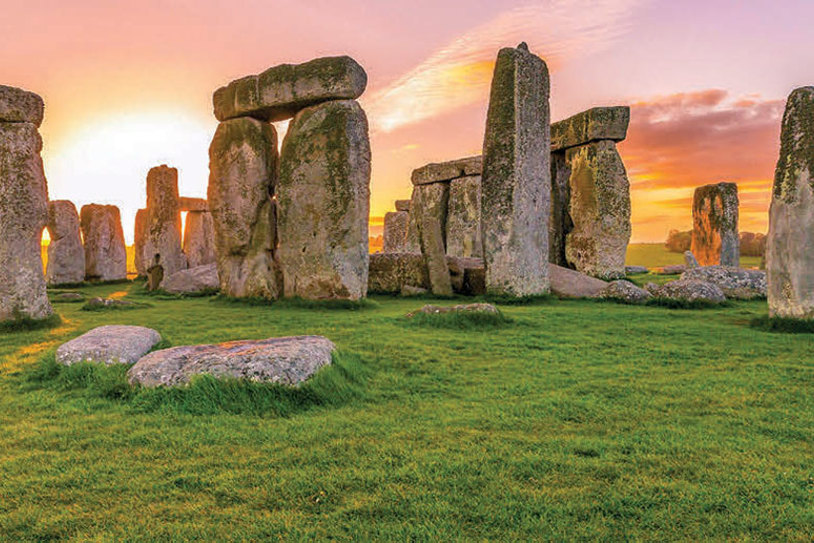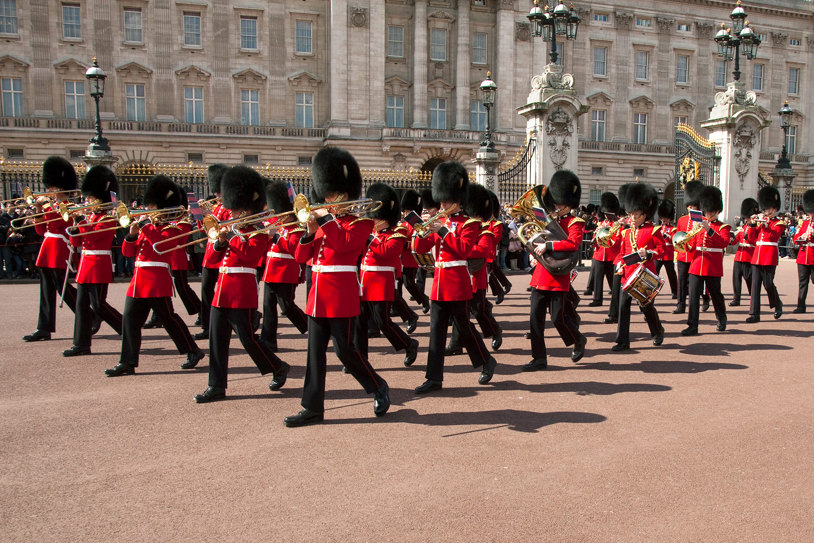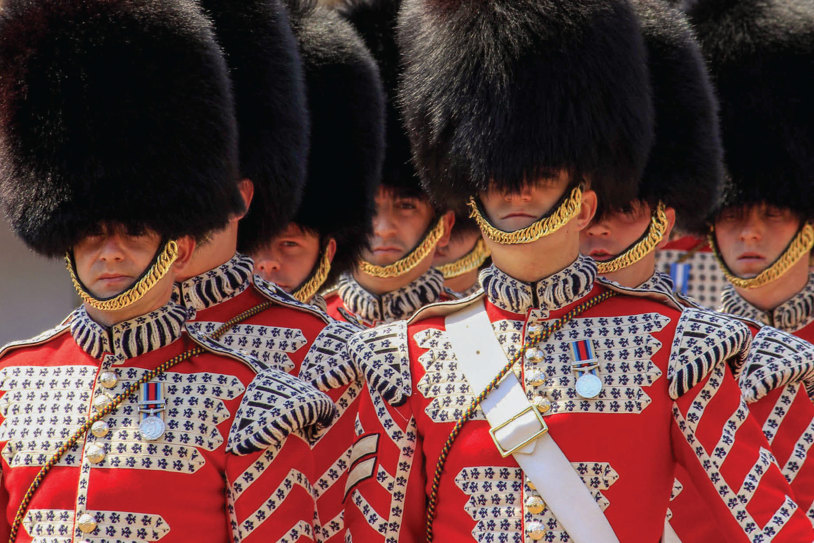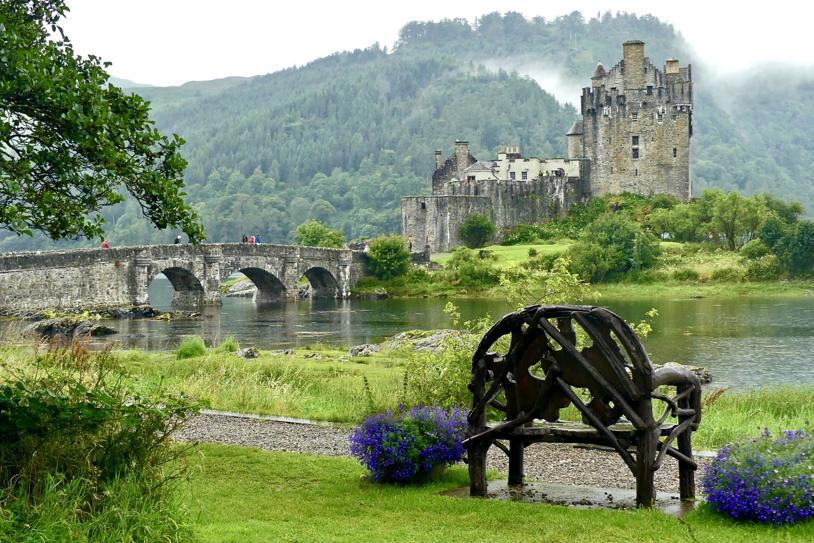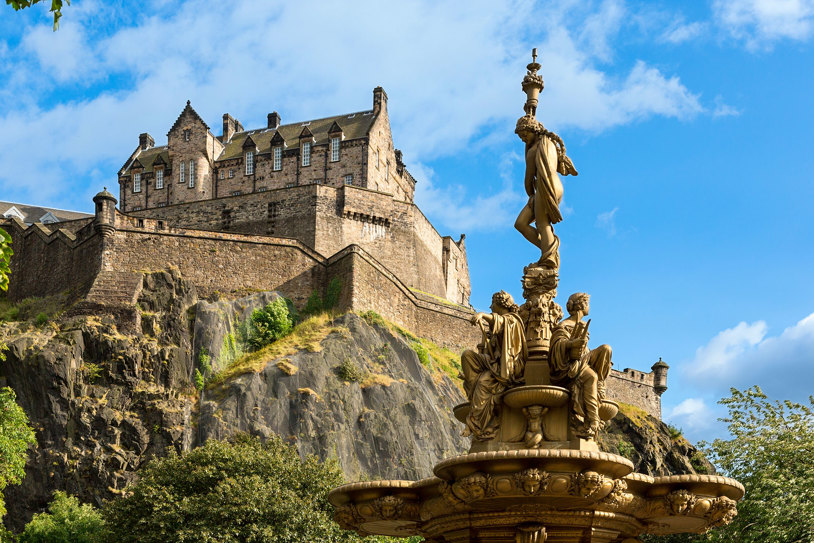Enjoy a proper English tea in London or be treated to homemade scones in a castle in Scotland
About Us
For more than 50 years, Grand European Travel has been providing a wonderfully simple, and genuinely personal, way to travel.
Meet Our Team
Our Travel Specialists make planning your trip fun and hassle free
Guided Vacations
Top 10 advantages of taking a guided tour
Guest Reviews
As you plan your trip, read our unedited guest reviews
Travel Insurance
Protect your vacation with travel insurance.
Responsible Travel
Powered by our not-for-profit foundation, TreadRight
Current Offers
From Last Minute Deals to limited time promotions, see all offers.
Big Travel Sale
SAVE up to 15% on 2026 Tours
Double Past Traveler
Double Global Tour Rewards on select trips
GETAWAY Deals
Great deals on last minute travel
AARP Member Benefits
Enjoy exclusive savings on guided tours and river cruises
2027 Cruise Savings
Early Booking Savings up to 20%
Solo Traveler Deals
2026 Single Supplement Cruise Discounts
The History and Custom
of Tea in Great Britain
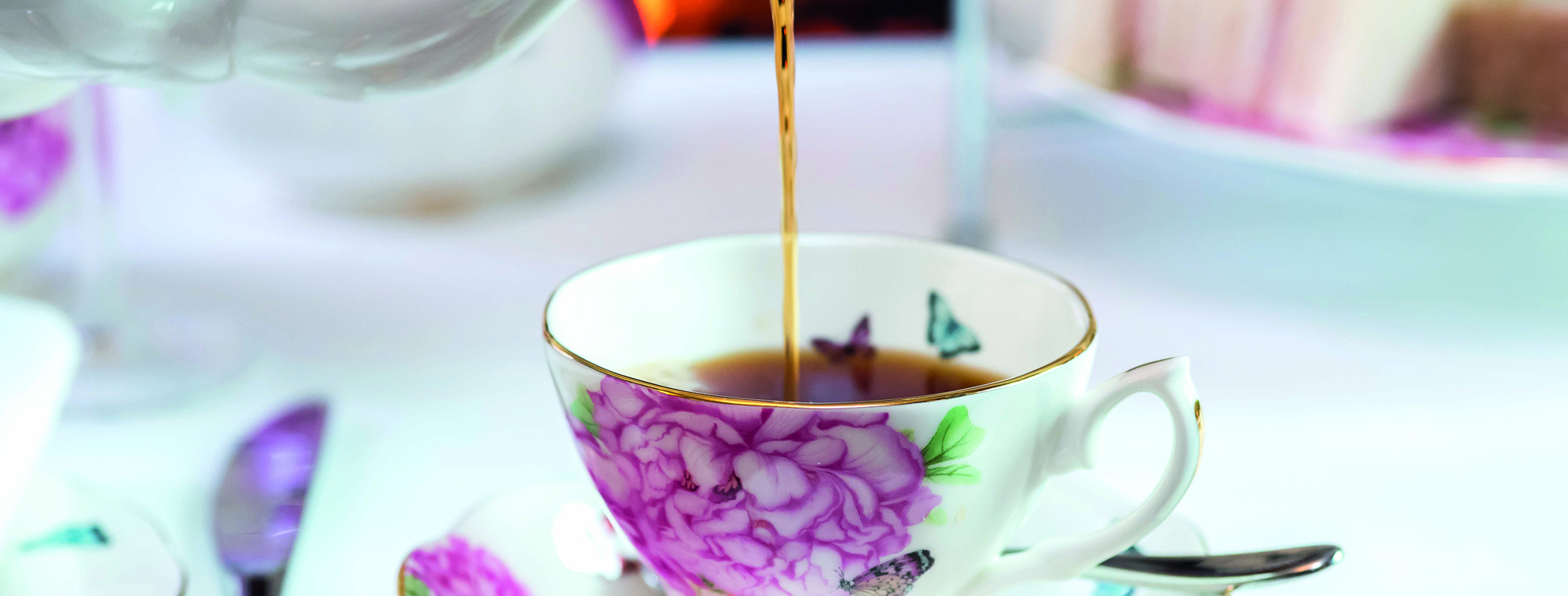
Tea is woven into the very fabric of England. From Jane Austin to Downton Abbey, depictions of upper-crust British life are incomplete without the ritual of a refined afternoon tea.
The soft chime of bone china, a teapot emitting earthy fragrance in wreaths of steam, delicate sandwiches, pretty confections, and tender scones topped with a cloud of cream and glistening jam: Who could resist? While English tea is served at hotels and restaurants around the world, it’s a must-do when visiting Great Britain.
Tea in the United Kingdom
The History of Tea in Great Britain
Tea landed on British shores in 1662 when Catherine of Braganza, daughter of Portugal’s King John IV, married King Charles II. Her dowry included land, money, spices, treasures, and probably tea. Tea was considered a medicine in England, but Catherine’s daily habit influenced fashionable courtiers. A costly import from China, tea remained the domain of the rich for generations. Drinking it displayed wealth: Portraits often included the fine china and accessories accompanying the custom of drinking tea.
Anna, the seventh Duchess of Bedford and a Lady-in-Waiting to Queen Victoria, launched the ritual of afternoon tea around 1840. Hungry at four o’clock, with the evening meal still several hours away, she requested a tray of tea, bread and butter, and cake to her room. She eventually invited friends to join her, and a women’s afternoon ritual was born. The custom migrated into drawing rooms and outdoors in fine weather, eventually including men. By the 1880s afternoon tea was firmly ensconced in English high society.
Cream Tea, High Tea, Low Tea, or Elevenses? Vocabulary for Tea in the United Kingdom
In America, we’re accustomed to calling a fancier afternoon tea “high tea” – sounds appropriate for a posh high-society affair, right? Actually, that’s what working classes in much of the United Kingdom call their evening meal. This hearty meal is served at a table with chairs or stools, hence it’s “high” not “low.”
It’s also worth noting that vocabulary varies regionally in England. The midday meal may be called lunch, luncheon, or dinner, and the evening meal may be called dinner, supper, tea, or high tea, depending on location.
Afternoon tea or low tea is the refined upper-class ritual. It was served in drawing rooms, on low furniture, hence the name.
High tea, meat tea, or simply tea is a hearty evening meal among working classes in certain regions.
Cream tea is simply tea with scones with cream and jam. Devon, Dorset, Cornwall, and Somerset counties all proudly identify with a cream tea.
Elevenses is a "'cuppa" and a nibble such as a bun or a scone, around 11 AM. It’s a term unknown before the twentieth century, but a concept with timeless appeal.
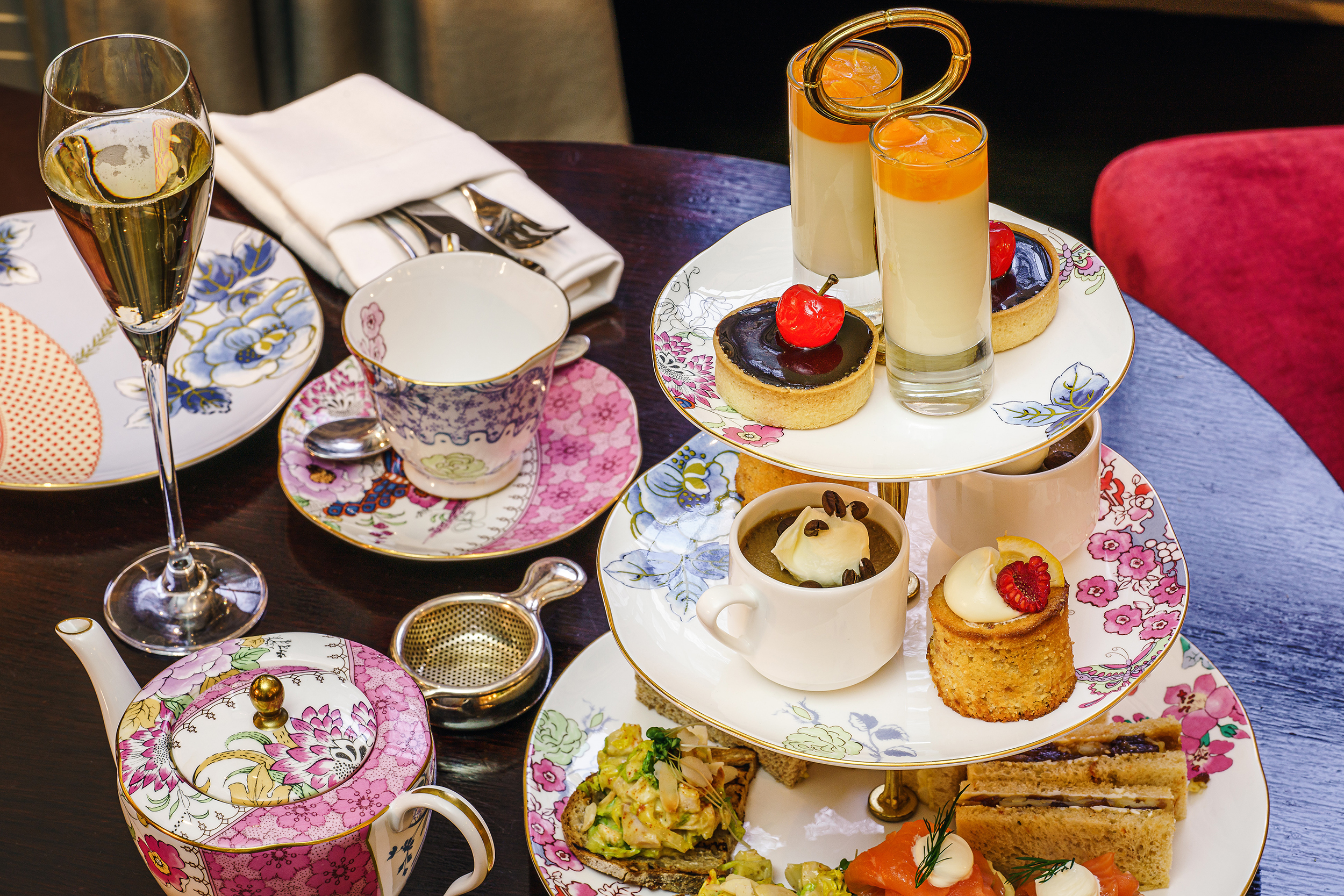
The Elements of Afternoon Tea
A proper tea should be lingered over. The high tea menu includes both sweet and savory elements, often served simultaneously in a tiered stand. Small sandwiches, lightly filled, with the crusts trimmed are the first course.
Scones with cream and jam are next up: Devonshire clotted cream is beloved in Devon and beyond for its rich, buttery flavor and texture, with double cream or whipped cream other common alternatives.
Lastly, an assortment of dainty cakes and pastries concludes the meal. A glass of sherry or champagne may be part of the package.
Amazing Britain
Day 1
Welcome to LondonDay 2
Journey to Stratford-upon-Avon and on to LeedsDay 3
Cross Hadrian’s Wall and onwards to EdinburghDay 4
Discover Enchanting EdinburghDay 5
Venture into the Scottish HighlandsDay 6
Onwards to Loch Lomond and Glasgow’s Rich LegacyDay 7
Explore the Lake District and Journey to LiverpoolDay 8
Through the Beautiful Welsh Countryside to Discover BristolDay 9
Soak up Bath and Stonehenge then off to LondonDay 10
Goodbye London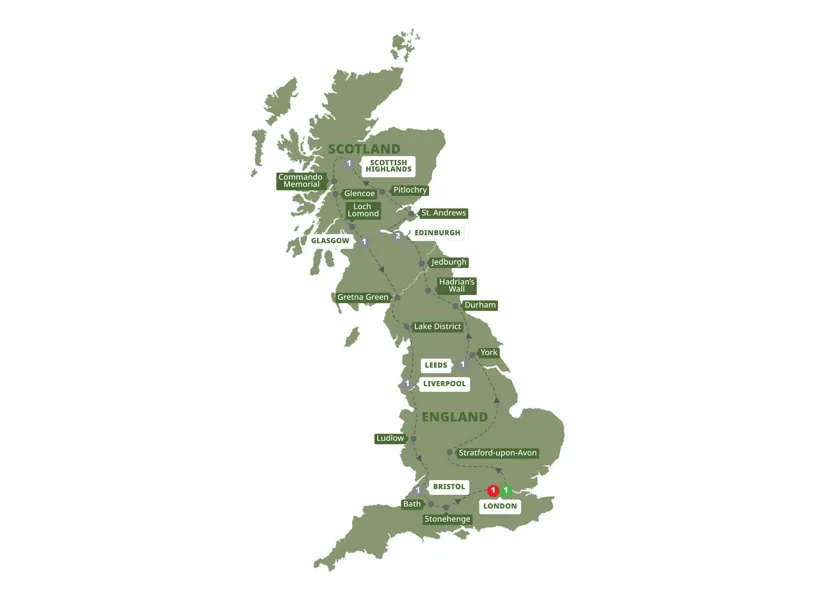
London Explorer
Day 1
Welcome to LondonDay 2
Discover Multicultural LondonDay 3
London Your WayDay 4
Experience London’s Markets and MuseumsDay 5
Journey to Prehistoric Stonehenge and WindsorDay 6
Explore Westminster Abbey and Kensington PalaceDay 7
Cruise the Thames to GreenwichDay 8
Cheerio London!
Real Britain
Day 1
Welcome to LondonDay 2
Explore the Sights of LondonDay 3
Journey to Stonehenge, Bath and CardiffDay 4
Through the Scenic Countryside to LiverpoolDay 5
Venture to the Romantic Lake District and on to EdinburghDay 6
Discover Edinburgh’s TreasuresDay 7
Explore Hadrian’s Wall and Onwards to YorkDay 8
Admire Stratford-upon-Avon and return to LondonDay 9
Cheerio London
Majestic Scotland
Day 1
Arrive GlasgowDay 2
Glasgow Sightseeing and free timeDay 3
Glasgow – Glencoe – Scottish HighlandsDay 4
Culloden – Loch Ness – Isle of SkyeDay 5
Scottish Highlands – Pitlochry – St. Andrews – EdinburghDay 6
Edinburgh sightseeing and free timeDay 7
Depart Edinburgh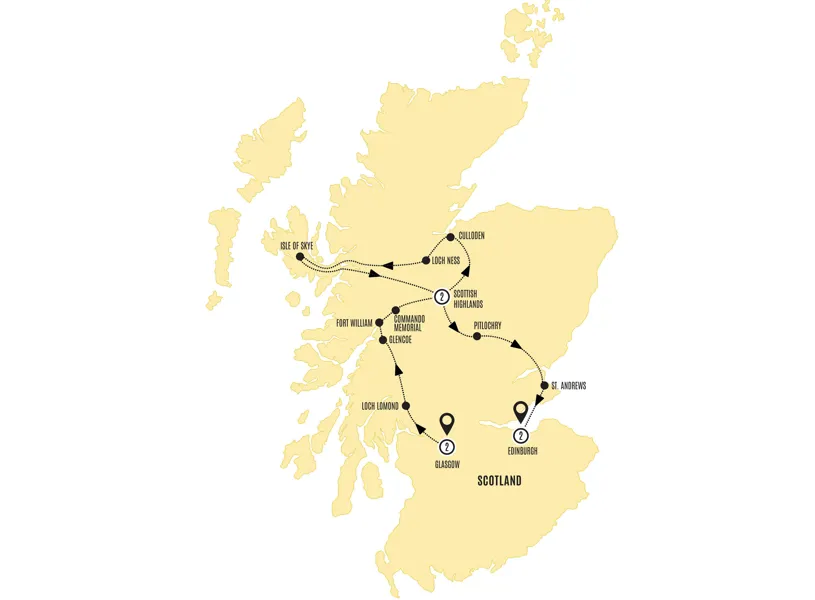
Best of Britain
Day 1
Welcome to LondonDay 2
Explore Historic LondonDay 3
Journey to Stonehenge, Bath and ExeterDay 4
Plymouth and More in the SouthwestDay 5
Onwards to CardiffDay 6
Explore Tudor History and on to LiverpoolDay 7
Venture to the Romantic Lake District and on to GlasgowDay 8
On to Fort William and the Scottish HighlandsDay 9
Discover the Isle of SkyeDay 10
Journey to Enchanting EdinburghDay 11
Uncover Edinburgh’s TreasuresDay 12
Continue to YorkDay 13
Onwards to Shakespeare’s Stratford-upon-Avon and LondonDay 14
Cheerio London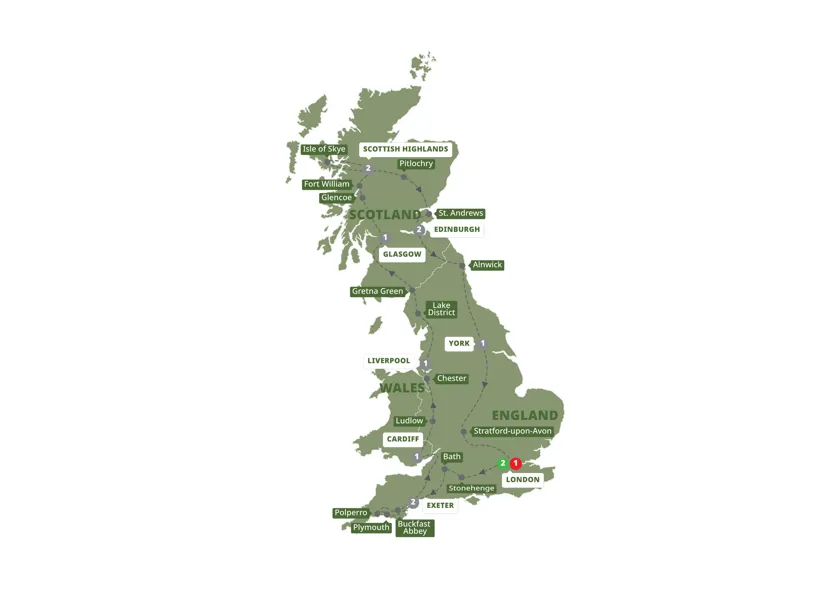
Country Roads of Scotland
Day 1
Welcome to EdinburghDay 2
Edinburgh, The Capital of CultureDay 3
To St. Andrews and the Highland Capital of InvernessDay 4
Culloden, Loch Ness and onto ThursoDay 5
A Day in the Orkney IslandsDay 6
Over the Sea to SkyeDay 7
Through the Scottish Highlands to GlencoeDay 8
Along the Bonnie Banks of Loch Lomond to GlasgowDay 9
Depart Glasgow
Best of Scotland
Day 1
Welcome to EdinburghDay 2
Discover Enchanting EdinburghDay 3
Venture into the Scottish HighlandsDay 4
Explore Culloden, Loch Ness and the Isle of SkyeDay 5
Journey to Thriving GlasgowDay 6
Walk the Walls of Stirling CastleDay 7
Farewell Glasgow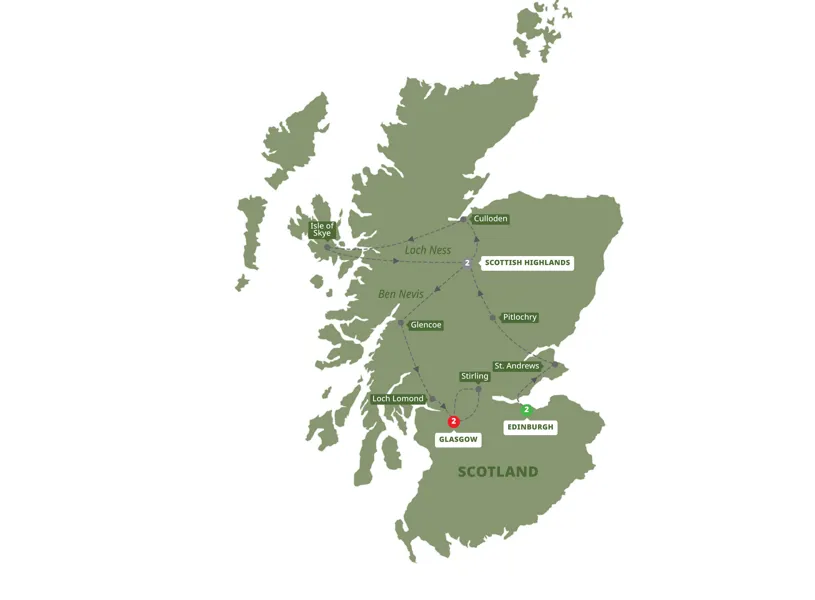
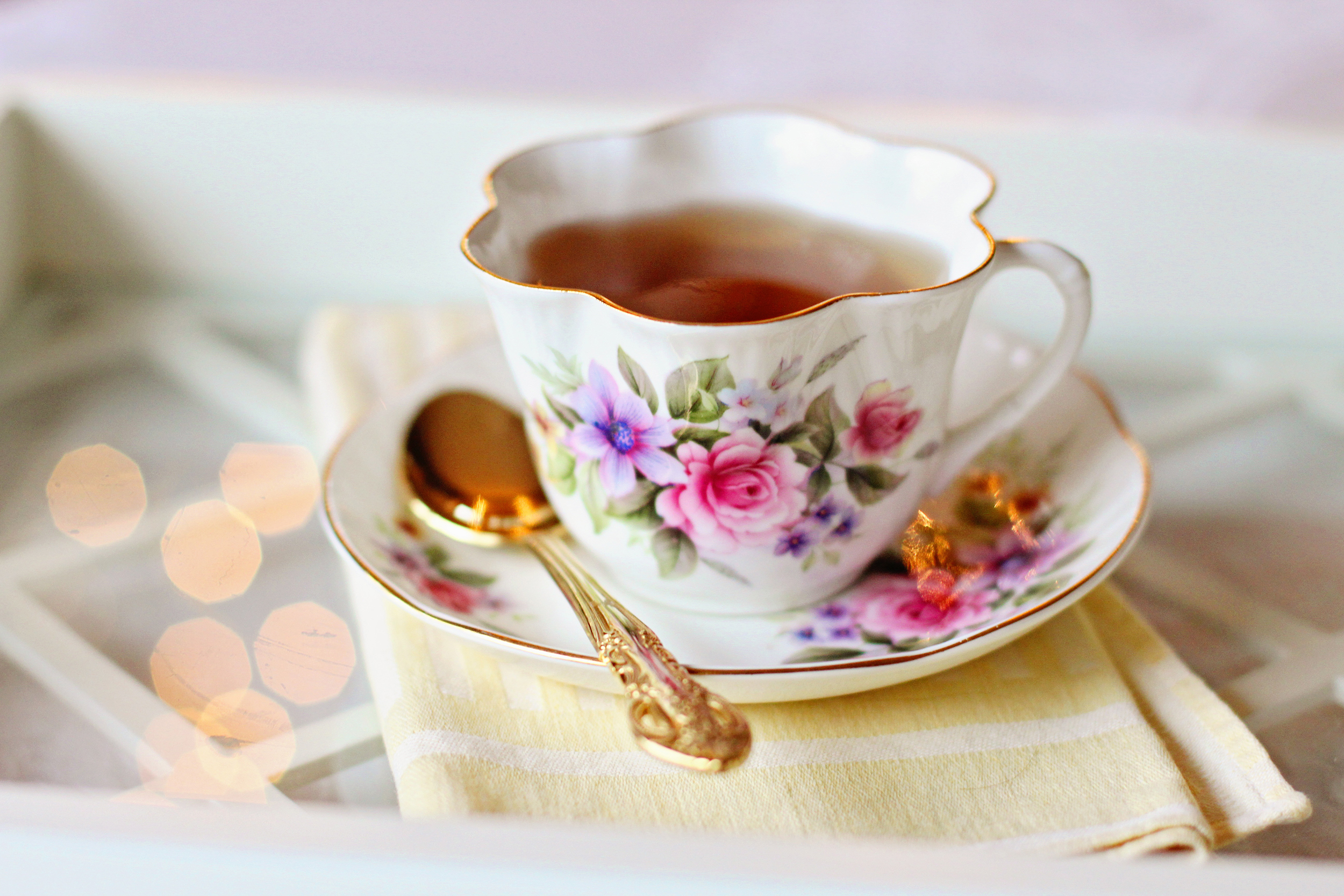
Proper Manners for Tea
While etiquette and customs have traditionally been highly valued among the upper echelons, you shouldn't worry about committing an offense as long as you embrace good table manners.
The question of whether tea or milk goes in the cup first is a common one. Historically, milk was poured first only when the china was of modest quality, to prevent the sudden shock of hot tea from cracking the cup. The wealthy had no doubts about the caliber of their fine bone china, so they put in tea first, then milk.
Is it required to raise a pinky when drinking tea? No, just handle your cup gently and confidently. No slurping!
Which goes first on the scone, the cream or the jam? Different regions have different practices, so watch the locals or just take your chances. This brief primer on tea in England should help you make the most out of your visit. Enjoy a proper English tea in London or beyond, no pinky posing required.
You Might Also Like
 Tap To Call
Tap To Call
 Free Brochure
Free Brochure
Order Your Free Brochure
Sign up to order your FREE travel brochure subscription and get exclusive offers only available to our subscribers
Thanks for signing up to receive our latest brochure. As a subscriber, you'll be the first to receive our new brochures as they are released, plus great deals in your inbox.



